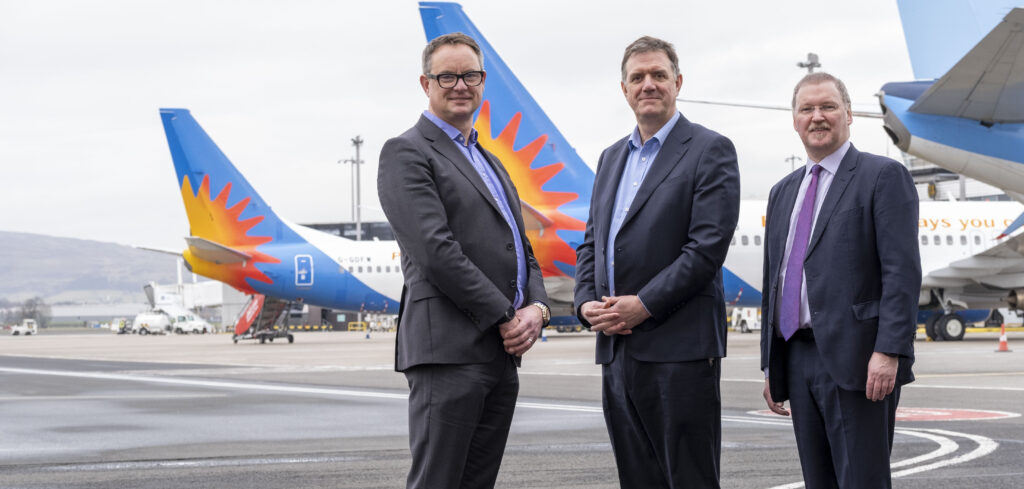The UK government’s innovation agency, named Connected Places Catapult, has partnered with Glasgow Airport in Scotland for five years to create the UK’s first Connected Airport Living Lab.
The partnership will produce a series of demonstrations and trials of new technologies at the airport, designed to improve an inclusive approach to passenger experience, boost productivity and hit sustainability targets. The Connected Airport Living Lab aims to accelerate the electrification of flight, the use of hydrogen, automation data analytics and multi-modal connected surface-level access.
The partnership will also support existing collaborations in the region, including the airport and Catapult’s ongoing involvement with Care and Equity – Healthcare Logistics Universities Air Squadron Scotland (CAELUS), which is working with NHS Scotland to build a national drone network that can transport essential medicines, blood and other medical supplies throughout Scotland, including to remote communities.
Andy Cliffe, CEO of airport operator Aberdeen, Glasgow, Southampton (AGS) Airports, said, “New technologies have the power to transform the experience of everyone who interacts with the airport. As passenger numbers continue to recover after the pandemic, we want to develop a more inclusive passenger experience, and as Scotland’s largest cargo airport by freight value, there is an opportunity to grow the volume of imports and exports moving through Glasgow. With those opportunities, making Glasgow Airport the UK’s first Connected Airport Living Lab will put us at the forefront of new developments that can make journeys and freight movements smoother. This partnership also aligns with our own sustainability commitments to balance the undoubted economic and social benefits the airport delivers with our climate-change responsibilities.”
Gary Cutts, Future Flight Challenge director at Innovate UK, said, “At Innovate UK, we are committed to creating a better and more sustainable future by inspiring, involving and investing in life-changing innovations. Aviation is one of the most challenging sectors to decarbonize. Our Future Flight Challenge program is aimed at accelerating the progress of new technologies in this sector. Glasgow Airport and the Catapult are already working as part of this program, and the creation of the Living Lab will drive the testing and adoption of new technologies as we progress toward a sustainable future.”
The Living Lab will also work with the Glasgow City Region to support its threefold economic strategy to grow into a more inclusive, productive and green economy by 2030.
Councilor Susan Aitken, leader of Glasgow City Council, said, “Glasgow is a hub for the next generation of skilled workers, supporting the implementation of cutting-edge technologies. We want to upskill the future workforce to deliver new, greener forms of flight alongside the decarbonization of airport operations. Ultimately, this Living Lab is a step toward us reaping the benefits of a thriving innovation economy in Scotland as we progress toward our goal of becoming the most inclusive, productive and green city region by 2030.”
Stuart Patrick, chief executive at the Glasgow Chamber of Commerce, said, “Glasgow airport is of hugely strategic importance to the city’s trade and business investment, and our members all understand the economic benefits that highly innovative, connected airports can provide. We have a powerful supply chain of local companies that can support the airport and airlines to innovate, something we’re very keen to support among businesses across Glasgow.”
Paul Wilson, chief business officer at Connected Places Catapult, said, “Airports are changing from being just transport hubs on the edge of cities to becoming hives of innovative economic activity. As such, they have huge potential to support skills development, job creation and regional growth. By establishing the Connected Airport Living Lab at Glasgow Airport, we are concentrating our efforts to support innovation that is truly inclusive, delivering direct benefits to people and businesses in the region. We will also continue our work alongside the city council and with stakeholders across the city region, such as the universities and the Chamber of Commerce, to deliver tangible benefits for all.”

